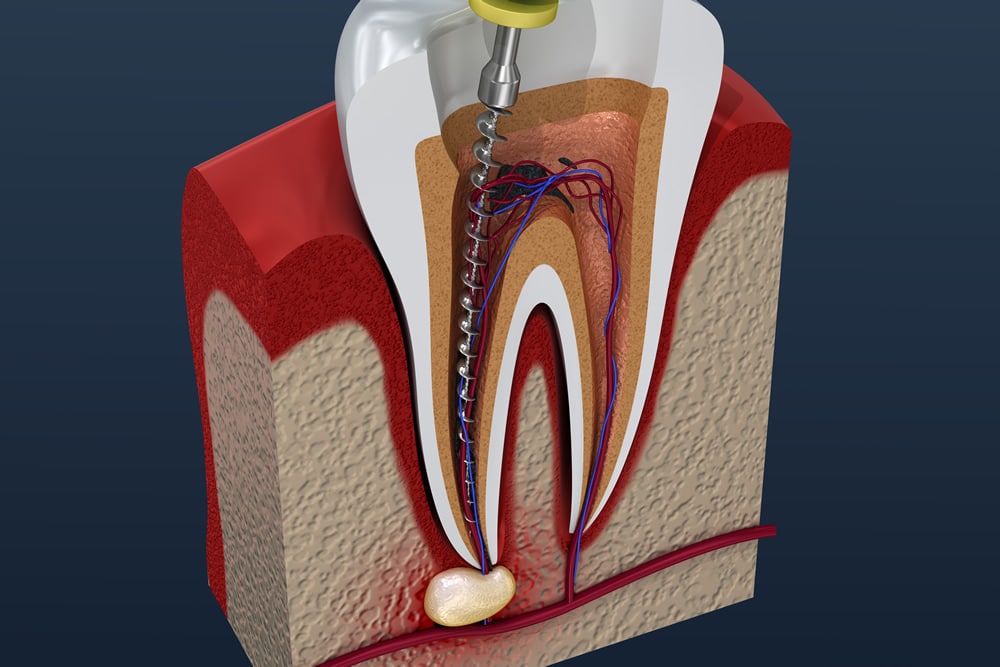Do You Need a Root Canal or Tooth Extraction?
Though you may not think about it all the time, you depend upon your mouth working well and feeling comfortable all day long, every day. Optimal oral health not only ensures proper function and comfort, it also helps to protect your overall health. This is why, whenever a tooth has suffered from decay or damage, it is important to resolve the issue and restore optimal oral health as rapidly as possible. To this end, your dentist will always work hard to save as much of your natural tooth as can be saved. However, there are some instances where this is just not in your absolute best interest.
The Differences Between Root Canals and Tooth Extractions
There is a broad range of restorative dental procedures. Determining which procedure is best for your specific situation depends largely upon your oral and overall health, as well as the extent of tooth decay or damage. Minor tooth decay or damage can often be handled with simpler restorative procedures, like composite fillings, while more extensive decay or damage requires more thorough restorative procedures, like root canals or tooth extractions.
A root canal is a restorative dental procedure during which your dentist will remove all the damaged tooth pulp in the very center of the tooth (the canals inside the root) before cleaning, disinfecting, filling and sealing the tooth. While the procedure can vary slightly based upon the type, extent and location of the damage, it normally includes five basic steps:
-
- X-ray of the tooth. This allows the dentist to see exactly what is going on inside the tooth and whether a root canal is actually appropriate.
-
- Anesthesia administration. By numbing the tooth and thereby eliminating pain, your dentist can make sure you will be as comfortable as possible throughout the procedure.
-
- Removing infected pulp. Your dentist will create a small opening in the top of the tooth and then clean out the infected pulp that is inside the tooth. She will then irrigate the tooth to remove any remaining debris, and treat it with an antimicrobial solution to eliminate any possible remaining bacteria.
-
- Filling the tooth. A filling material is used to replace the infected pulp that was removed from the tooth. Dental cement then seals the hole in the tooth so that it is better protected against further bacterial attacks.
-
- Crown placement. A custom-designed and dental laboratory-fabricated dental crown is placed upon the top of the tooth that received the root canal. This helps to ensure proper shape, function and comfort of the restored tooth. In some cases, your dentist may need to place a small post inside the root chamber to help support and stabilize the crown.
Properly cared for, a tooth that has been restored with a root canal procedure can last a lifetime.
A tooth extraction is a restorative dental procedure in which your dentist will remove the entire tooth from its socket in the jawbone. This procedure is recommended only when tooth decay or damage is so extensive that no other procedure will adequately and properly restore dental health, and when leaving the tooth in the mouth has the potential to create more oral health problems for the individual. There are two main types of tooth extractions:
- Simple tooth extraction. In this procedure, your dentist will loosen the tooth in the socket and then remove it from the mouth.
- Surgical tooth extraction. In this procedure, your dentist will need to surgically remove the gum from the socket, often in separate pieces. This procedure is necessary when the tooth is too weak to be removed through simple extraction procedures, hasn’t fully erupted into the mouth, is impacted, or is broken at the gum line.
Which Procedure is Best For You?
While tooth extractions are the least expensive of the two options, root canals are often more advisable where they are possible. This is largely because root canals allow for some preservation of your natural tooth, and tend to last an entire lifetime. However, there are some instances where a tooth is simply too damaged to remain in the mouth, and an extraction is therefore the best option. Your dentist will be able to help you determine which is the case for you.
For more information about root canals or tooth extractions, contact Dr. Saferin today.


